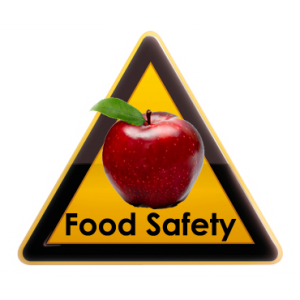Standard Operating Procedures For Food Safety

Any successful restaurant enterprise needs standard operating procedures for food safety. Many problems can arise if you do not have set measures in place on exactly how workers handle the food on a daily basis.
Receiving Food Deliveries
One of the first goals of food safety is to ensure that all food that arrives is fresh and safe when it first enters your restaurant. You need measures that require food be transferred as quickly as possible to the proper storage place. This is especially important for any food that requires refrigeration. You should also take the time to check the temperature of all refrigerated products. Fish, meat and poultry products should be at a temperature of 41 degrees Fahrenheit or below and any daily or milk products should be at 45 degrees or below.
Proper Food Storage Procedures
Procedures should prevent cross-contamination during storage for certain foods. Separate ready-to-eat foods such as various lunch meats, diced fruit or lettuce from raw foods such as meat, poultry, eggs or fish. Keep washed fruits and vegetables from those yet to be washed. Most leftovers have a shelf life of seven days. In order to keep track, label leftovers by dating them.
Handling Food
Require all your employees to wash their hands religiously. This is a vital habit that is required for ultimate food safety. Employees need to scrub their hands with soap for at least 15 seconds and use warm water to rinse their hands.
Cleaning Food Contact Surfaces
Put specific procedures in place for cleaning any food contact surfaces. A good example is to install a rule that when preparing any type of raw foods such as fish, eggs, meat or poultry that you have to clean the surface between every use. This keeps the possibility of cross-contamination way down. Also install proper procedures for cleaning areas such as sinks, counter tops, and even the dishwasher area.
General Food Preparation Procedures
Prepare foods as close to serving time as possible. Always separate raw foods from ready-to-eat foods. A good rule of thumb is to serve, refrigerate or discard any food product within four hours. Mixing different kinds of food in the same container for storage can also be a hazard if you are not careful. If possible, prepare the food in small batches. This cuts down on wasting food and keeps your inventory of food from going bad sooner.
Receiving Food Deliveries
One of the first goals of food safety is to ensure that all food that arrives is fresh and safe when it first enters your restaurant. You need measures that require food be transferred as quickly as possible to the proper storage place. This is especially important for any food that requires refrigeration. You should also take the time to check the temperature of all refrigerated products. Fish, meat and poultry products should be at a temperature of 41 degrees Fahrenheit or below and any daily or milk products should be at 45 degrees or below.
Proper Food Storage Procedures
Procedures should prevent cross-contamination during storage for certain foods. Separate ready-to-eat foods such as various lunch meats, diced fruit or lettuce from raw foods such as meat, poultry, eggs or fish. Keep washed fruits and vegetables from those yet to be washed. Most leftovers have a shelf life of seven days. In order to keep track, label leftovers by dating them.
Handling Food
Require all your employees to wash their hands religiously. This is a vital habit that is required for ultimate food safety. Employees need to scrub their hands with soap for at least 15 seconds and use warm water to rinse their hands.
Cleaning Food Contact Surfaces
Put specific procedures in place for cleaning any food contact surfaces. A good example is to install a rule that when preparing any type of raw foods such as fish, eggs, meat or poultry that you have to clean the surface between every use. This keeps the possibility of cross-contamination way down. Also install proper procedures for cleaning areas such as sinks, counter tops, and even the dishwasher area.
General Food Preparation Procedures
Prepare foods as close to serving time as possible. Always separate raw foods from ready-to-eat foods. A good rule of thumb is to serve, refrigerate or discard any food product within four hours. Mixing different kinds of food in the same container for storage can also be a hazard if you are not careful. If possible, prepare the food in small batches. This cuts down on wasting food and keeps your inventory of food from going bad sooner.
- rw918effd1fbeb68e949f9e2be7c71296a.jpg